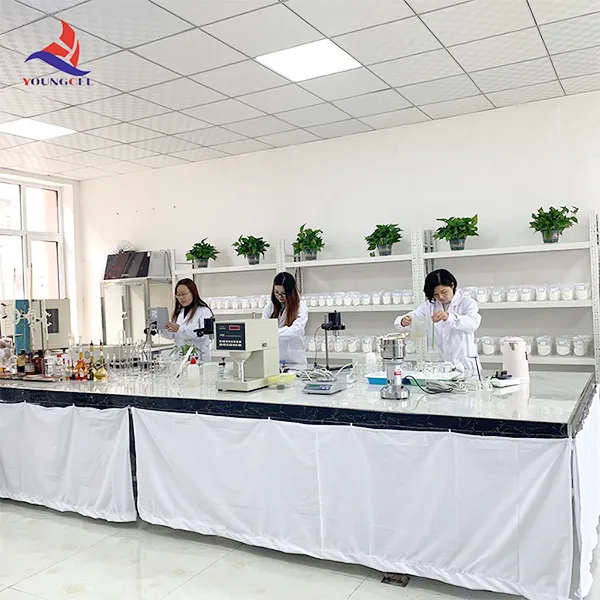The Importance of Redispersible Powder (RDP) in Modern Construction
In the ever-evolving field of construction and building materials, the search for innovative solutions that enhance performance while ensuring sustainability has never been more critical. Among these innovations, Redispersible Powder (RDP) has emerged as a versatile and essential ingredient in numerous applications. Commonly used in various premixed dry mortars and construction products, RDP plays a pivotal role in improving the workability, adhesion, and durability of building materials.
What is Redispersible Powder?
Redispersible Powders are finely divided polymers that can be re-dispersed in water. They are produced by spray-drying an aqueous polymer emulsion. When these powders are mixed with water, they form a stable dispersion that provides enhanced properties to the final products. RDPs are primarily used in the formulation of tile adhesives, renderings, dry-mix mortars, self-leveling compounds, and many more.
Key Benefits of Redispersible Powder
1. Improved Workability One of the most significant advantages of incorporating RDP into construction materials is the enhanced workability it provides. RDPs contribute to a smoother and more consistent texture, making the application process easier for workers. This improved workability is especially beneficial in large-scale projects where efficiency is crucial.
2. Increased Adhesion Redispersible Powder enhances the bonding strength of mortars and adhesives significantly. This property is vital for applications that require a durable bond, such as tile setting and wall finishes. The improved adhesion helps prevent delamination, cracking, and other failures that can occur over time, especially in environments subject to movement or stress.
3. Flexibility and Crack Resistance In the world of construction, flexibility is key. RDPs provide flexibility to building materials, allowing them to accommodate slight movements without compromising structural integrity. This feature is particularly important in areas prone to temperature fluctuations and seismic activities, where traditional mortars might crack under stress.
redispersible powder rdp

4. Water Resistance RDPs contribute to the water-repellency of mortars, making them less susceptible to moisture-related damage. This characteristic is especially valuable in exterior applications, where weather conditions can negatively impact the performance of standard materials. By improving water resistance, RDPs help to extend the lifecycle of construction projects.
5. Ease of Use Redispersible powders can easily be incorporated into existing formulations without the need for significant adjustments to the manufacturing process. This ease of use helps manufacturers streamline their production and offer high-quality, reliable products to their customers.
Applications of RDP in Construction
The applications of Redispersible Powder are vast and varied. In tile adhesives, RDPs enhance the sticking power of the mixture, preventing tiles from slipping during installation. They are also used in external wall insulation systems, providing essential flexibility and resistance to water infiltration.
Furthermore, dry-mix gypsum mortars utilize RDPs to improve the mechanical properties of the final product, allowing for thin-layer applications that are robust and durable. Self-leveling compounds benefit from the enhanced flow and leveling characteristics attributed to RDPs, which ensure a smooth finish even in challenging environments.
Conclusion
In conclusion, Redispersible Powder (RDP) represents a crucial advancement in the construction industry, offering a range of benefits that enhance the performance of various materials. From improved workability to increased adhesion and flexibility, RDPs provide solutions that address many of the challenges faced in modern construction. As the industry continues to evolve, the role of redispersible powders is set to expand, making them indispensable in the quest for efficiency, durability, and sustainability in building projects. As architects, builders, and manufacturers increasingly recognize the advantages of RDPs, it is clear that this innovative material will shape the future of construction for years to come.
-
Rdp Powder: Key Considerations for Wholesalers in the Building Materials IndustryNewsJul.08,2025
-
Key Considerations for Wholesalers: Navigating the World of Hpmc - Based ProductsNewsJul.08,2025
-
Hpmc Detergent: Key Considerations for WholesalersNewsJul.08,2025
-
Key Considerations for Wholesalers: China Hpmc For Tile Adhesive, Coating Additives, Concrete Additives, and MoreNewsJul.08,2025
-
Crucial Considerations for Wholesalers: Navigating the World of Construction MaterialsNewsJul.08,2025
-
Key Considerations for Wholesalers Sourcing Additive For Cement, Additive For Concrete, Additive For Putty from Additive Manufacturer Shijiazhuang Gaocheng District Yongfeng Cellulose Co., Ltd.NewsJul.08,2025




